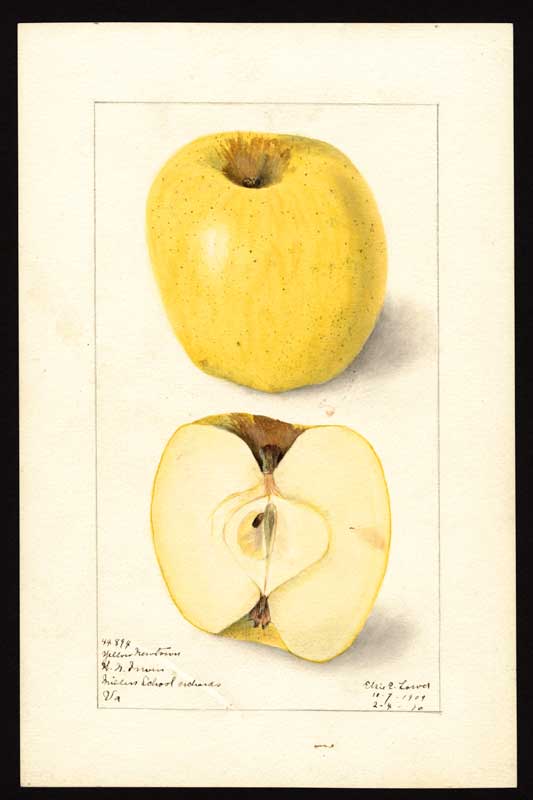A New Home in America
Arriving with European settlers, the domestic apple adjusted to life in America.
Wild apples have grown across North America for thousands of years. There are four main species of American crab apple, three in the east and midwest – Malus angustifolia, Malus coronaria, and Malus ioensis – and Malus fusca in the northwest. From the apple’s centre of origin in China, such wild apples are thought to have been spread by birds and mammals across the northern hemisphere, an early ingression to North America. Hardy trees, their fruits however are small and bitter.
The first settlers who landed in Virginia on 14th May 1607 to establish Jamestown for the Virginia Company of London, initially suffered extreme hardship and hunger. The records of the Virginia Company show that seeds and “some ffruite trees of two years grafting” were shipped from England, bringing the sweet domestic apple, the fruit of the Tian Shan, to America – together with the promise of future harvests of familiar fruit in this new and forbidding land. Jamestown became the first permanent English settlement in America.
By the mid eighteenth century, the Swedish naturalist Pehr Kalm reported domestic apple orchards abounding across the eastern states but also noted their susceptibility to frost. It transpired that whilst the imported young trees of European varieties generally struggled in the harsher American climate, the pippins – the trees grown from pips – thrived.
An indication of their success comes from recent research of pre-1830 American publications and fruit catalogues which found that 56% of apple varieties available were US seedlings, the rest imported cultivars, primarily from the UK.
“In effect, the apple, like the settlers themselves, had to forsake its former domestic life and return to the wild before it could be reborn as an American ”
Michael Pollan
Because apples do not grow true to type from seed, an array of new apple varieties grew from the pips that the settlers planted. The apple had changed its identity and emerged stronger, hand-in-hand with the growing nation, its commercialisation and space.
Among these new varieties came Newtown Pippin, Baldwin, Jonathan, Golden Delicious, Red Delicious, and McIntosh. All North American pippins, together they re-defined the menu of apples eaten across the world over the last 200 years.
The English may take the apple for granted – “No fruit is more to our English taste than the Apple” said Edward Bunyard – but America took the apple to heart.
“The apple is our national fruit…The American sun paints himself in these glowing balls amid the green leaves. ”
Ralph Waldo Emerson
The immigrant apple had become, as the saying goes, as American as apple pie.
Sources:
- Bunyard (1929) The Anatomy of Dessert
- Emerson (1913) Journals of Ralph Waldo Emerson, 1845-1848 Volume VII
- Kalm (1771) Travels into North America
- Pollan (2003) The Botany of Desire
- Volk and Henk (2016). Historic American Apple Cultivars: Identification and Availability. Journal of the American Horticultural Society
- Virginia Company of London Court records (1621)
Thanks to:
- Dr Ben Marsh, Reader in American History, University of Kent, UK
- Professor Michael Pollan, writer
- Dr Gayle Volk, plant physiologist, US Department of Agriculture National Plant Germplasm System









 John Everett Millais, Spring (Apple Blossoms) 1856-59 © Lady Lever Art Gallery
John Everett Millais, Spring (Apple Blossoms) 1856-59 © Lady Lever Art Gallery Billy Apple® - Cut 1964, offset lithograph on T.H. Saunders paper, edition of 25 Courtesy of The Mayor Gallery, London © Billy Apple ®
Billy Apple® - Cut 1964, offset lithograph on T.H. Saunders paper, edition of 25 Courtesy of The Mayor Gallery, London © Billy Apple ®